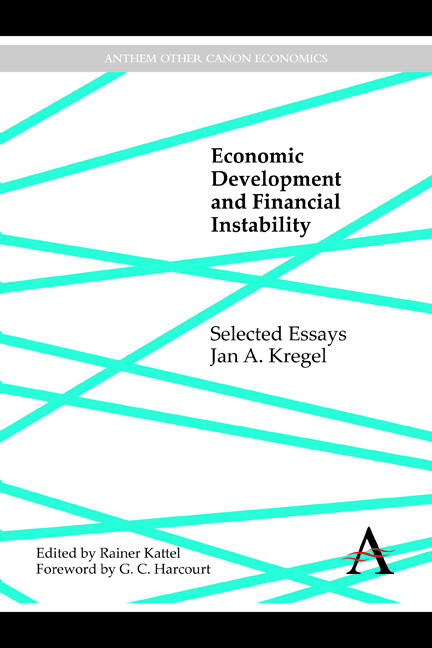Book contents
- Frontmatter
- Contents
- Foreword
- Publication History
- I Theoretical Discussions
- II Finance for Development
- III The Crisis in the US and the EU
- 16 Alternative Economic Analyses of German Monetary and Economic Unification: Monetarist and Post Keynesian
- 17 Currency Stabilization through Full Employment: Can EMU Combine Price Stability with Employment and Income Growth?
- 18 Minsky's “Cushions of Safety,” Systemic Risk and the Crisis in the Subprime Mortgage Market
- 19 Why Don't the Bailouts Work? Design of a New Financial System versus a Return to Normalcy
- 20 Is This the Minsky Moment for Reform of Financial Regulation?
- 21 Debtors' Crisis or Creditors' Crisis? Who Pays for the European Sovereign and Subprime Mortgage Losses?
- 22 Six Lessons from the Euro Crisis
- 23 Minsky and the Narrow Banking Proposal: No Solution for Financial Reform
- Index
19 - Why Don't the Bailouts Work? Design of a New Financial System versus a Return to Normalcy
from III - The Crisis in the US and the EU
Published online by Cambridge University Press: 05 November 2014
- Frontmatter
- Contents
- Foreword
- Publication History
- I Theoretical Discussions
- II Finance for Development
- III The Crisis in the US and the EU
- 16 Alternative Economic Analyses of German Monetary and Economic Unification: Monetarist and Post Keynesian
- 17 Currency Stabilization through Full Employment: Can EMU Combine Price Stability with Employment and Income Growth?
- 18 Minsky's “Cushions of Safety,” Systemic Risk and the Crisis in the Subprime Mortgage Market
- 19 Why Don't the Bailouts Work? Design of a New Financial System versus a Return to Normalcy
- 20 Is This the Minsky Moment for Reform of Financial Regulation?
- 21 Debtors' Crisis or Creditors' Crisis? Who Pays for the European Sovereign and Subprime Mortgage Losses?
- 22 Six Lessons from the Euro Crisis
- 23 Minsky and the Narrow Banking Proposal: No Solution for Financial Reform
- Index
Summary
1. Introduction
Despite the creation of a myriad of US Federal Reserve (hereafter referred to as the Fed) special discount window facilities, unlimited swap lending by the Fed to central banks throughout the globe and the use of Troubled Asset Relief Program (TARP) funds to bolster bank capital there appears to be little improvement in conditions in financial markets and it is widely lamented that the banking system is not providing lending to support the private sector. Comparison of the response to the 1930s Great Depression and the similar crisis in Japan in the 1990s suggests at least three factors that are absent in current policy: (i) direct measures to support bank incomes through interest rate policy, (ii) a clear understanding of the failures of the ‘modernised’ financial system, and thus (iii) a clear design for the shape and structure of the financial system that is to replace it.
2. Diagnosis Is More Important than the Cure
The prevailing diagnosis of the difficulties involved in reviving the financial system is based on the idea of a ‘liquidity trap’. This explanation is similar to that proposed for the 1990 Japanese crisis that followed the collapse of a bubble in equity and real estate markets eerily similar to that recently experienced in the USA.
- Type
- Chapter
- Information
- Economic Development and Financial InstabilitySelected Essays, pp. 297 - 308Publisher: Anthem PressPrint publication year: 2014



